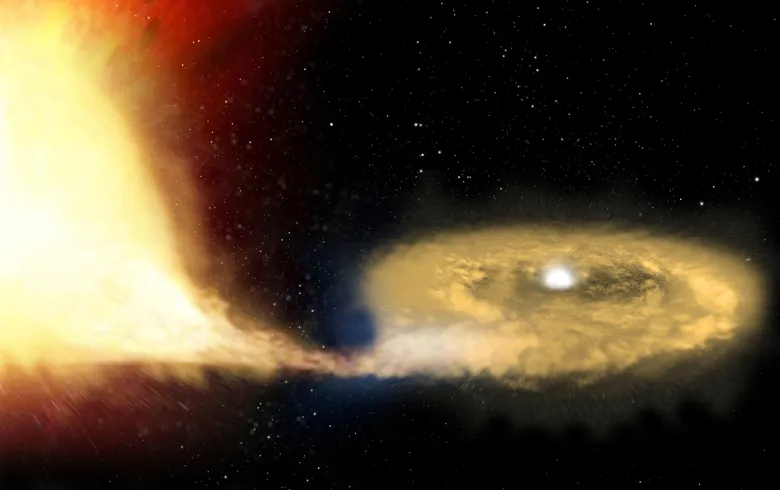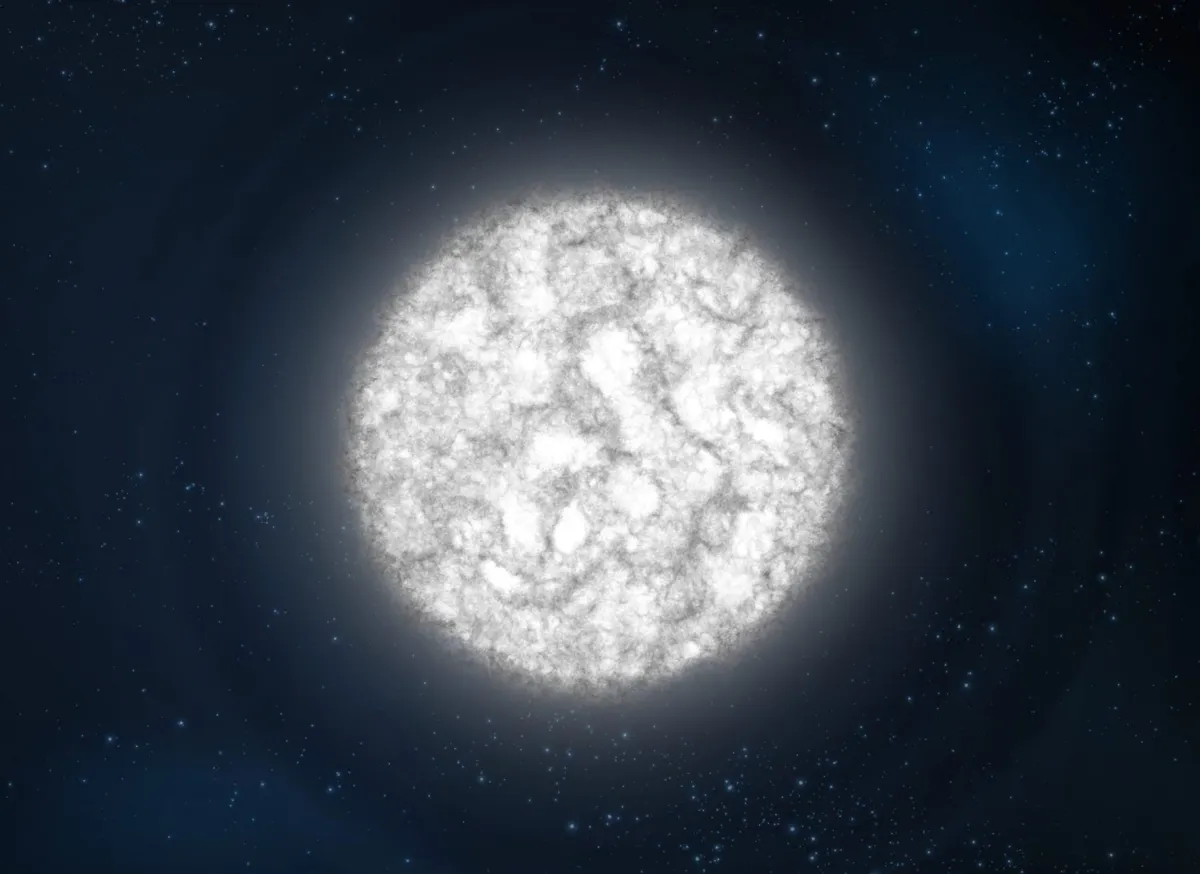For the first time ever, astronomers have discovered the origin of a unique type of stellar explosion known as a Type Ia supernova using radio emissions.
These specific kinds of supernova can be used to measure distances in the Universe, and also to probe the nature of dark energy.
The Type Ia supernova, known as SN 2020eyj, was first detected on 7 March 2020, but its true origins were unknown, until now.

Type Ia supernovae explained
Type Ia supernovae occur in binary star systems – where two stars orbit each other – in which one of the stars is a white dwarf.
The white dwarf consumes material from its companion star until it reaches its critical mass, which triggers a stellar explosion known as a supernova.
And because an explosion’s brightness depends on the star’s mass, Type Ia supernovae always have the same luminosity.
By comparing a Type Ia supernova’s apparent brightness as seen from Earth with its actual brightness, it can be used to calculate distances in space.
Investigating SN 2020eyj
Supernova 2020eyj was first discovered by the Zwicky Transient Facility camera on Palomar mountain in California, USA.
That study was led by Erik Kool, researcher at the University of Stockholm, in collaboration with research institutes across the world.
For this latest discovery, astronomers using thee-MERLINtelescope network operated by Jodrell Bank at The University of Manchester were able to study SN2020eyj and conclude that its binary star system was composed of a white dwarf and a Sun-like star.
Radio telescopes enable astronomers to detect and amplify radio waves originating in space, interpreting them to study the Universe.
The team behind this discovery studied the supernova’s light curve and infrared emission, narrow helium emission lines and radio counterpart.
The results have been published in the journalNature.

Dr David Williams, e-MERLIN Operations Support Scientist atThe University of Manchester, says: "Astronomers have been trying to detect radio emission from a Type Ia supernova for a few decades.
"Using e-MERLIN, the observatory staff were able to react quickly when we first heard of the potential interesting nature of this source from the authors of this study.
"The exquisite angular resolution of e-MERLIN combined with its high sensitivity enabled the radio emission to be pinpointed to the supernova, which is critical for establishing that the multi-wavelength emission was linked and attributed to the same source."

Javier Moldón, who participated in the discovery, says: "This first radio detection of a Type Ia supernova is a milestone that has allowed us to demonstrate that the exploded white dwarf was accompanied by a normal, non-degenerate star before the explosion.
"In addition, with these observations, we can estimate the mass and geometry of the material surrounding the supernova, which allows us to better understand what the system was like before the explosion.
"Now that we have demonstrated that radio observations can provide direct and unique information to understand this type of supernova, a path is opened to study these systems with the new generation of radio instruments, such as the Square Kilometre Array Observatory in the future."
Read the paper at arxiv.org/pdf/2210.07725.pdf
